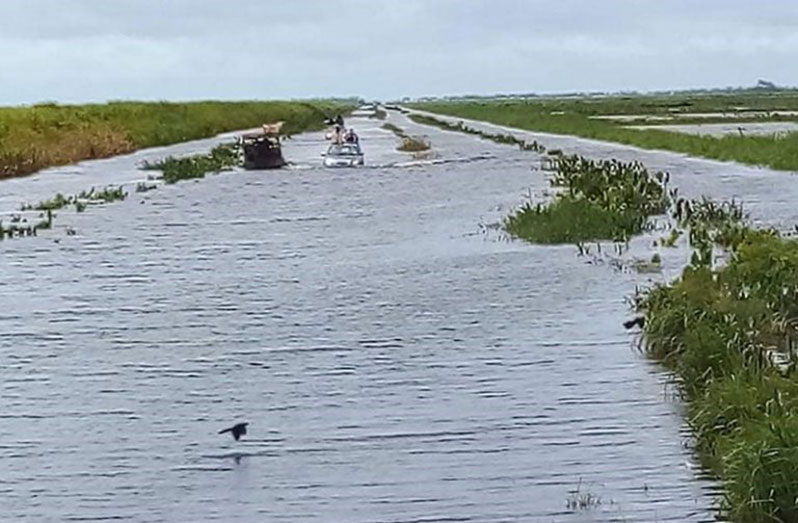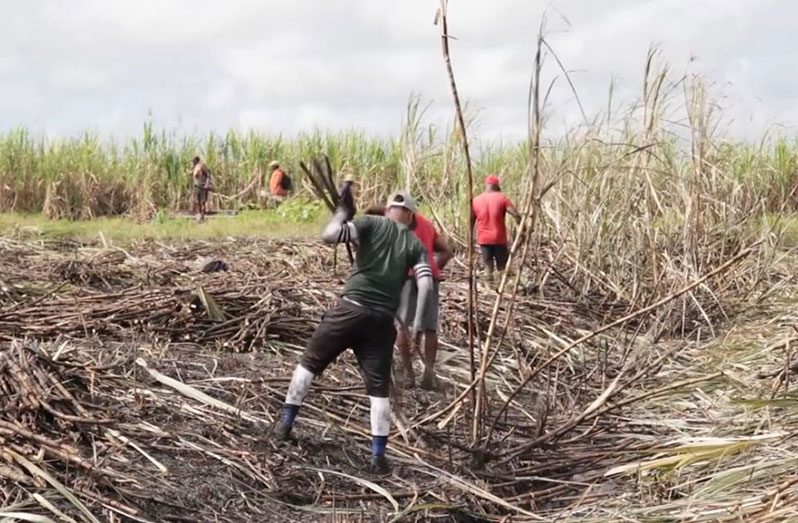AFTER being inundated for more than 65 days, the Albion Sugar Estate is ready to begin its second crop, albeit with reduced target. This was confirmed by the estate’s manager, Threbhowan Shivprasad, who spoke in a video posted online by the Guyana Sugar Corporation (GuySuCo) on Thursday.
With tillage works expected to commence within the coming weeks, the estate has been given a reduced target of 22,164 tonnes of sugar for this, its second crop. Prior to the devastating floods, the estate was in confident pursuit of a 33,000-tonne target.
“Our weekly target has also been reduced to 1543,” Shivprasad said. In light of waters receding from the estate, he said that there is no reason why the Albion estate would not be able to achieve its latest target.
“We have been tested [and] I think we have what it takes to persevere,” the estate manager asserted.
He indicated that even though floodwaters had devastated the cane fields, efforts continued to prepare the factory for grinding. As it is, Shivprasad said that the estate has enough punts and the requisite support from government to achieve its target. Most pressingly, efforts are being made to ensure adequate drainage and flood-prevention mechanisms are in place.
As distressing as the floods were, Shivprasad reminded that much of what is being experienced are as a result of climate change, which is largely due to human activity.

“There are things that we cannot control,” the estate manager posited. He said that notwithstanding the challenges, the estate has to recommence operations as its operations remain important to the livelihood of the village and the entire region.
Just as GuySuCo was starting to recover from years of neglect, fiscal deprivation and some amount of dismantling, the unprecedented disaster left the entity grappling with a loss of approximately $1.2 billion in sugarcane crops. Chief Executive Officer (CEO) of GuySuCo, Sasenarine Singh, had explained that while persistent rainfall affected all three of the grinding facilities, Albion was the hardest hit, with 100 per cent of the cane fields being inundated for weeks, with as much as five feet of water.
This had resulted in the estate recording a plant mortality rate of 80 per cent, which is likely to have a negative impact on the next two crops. The damage at Albion was cushioned by the combined sugar production at the Blairmont and Uitvlugt estates, both of which recorded only 10 per cent damage in crops. Because production at Albion was forced into a premature wrap-up, preliminary figures predicted a countrywide shortfall of at least 10,000 tonnes of sugarcane during this second crop.
“While we targeted 54,000 tonnes, we foresee only being able to make 40 to 45,000 tonnes,” Singh indicated.
He said that earlier in the year, during the first crop, GuySuCo was pursuing a production target of 42, 608 tonnes of sugar; however, only 29,750 tonnes were harvested, thereby resulting in a shortfall of some 12,958 tonnes of sugar. “Whenever it rains, production collapses,” Singh reminded.
Given the unavoidable circumstances, the GuySuCo CEO said that the country’s overall sugar production for this year is estimated to be in the vicinity of 72,000 to 75,000 tonnes – the lowest in the corporation’s history.
Moreover, after the floods continued, GuySuCo took a decision to suspend exportation of the country’s refined sugar, in an effort to ensure adequate provisions for the local market.
“We rediverted all of our available sugar in the bonds, to serve Guyana; primarily, our sugar is made in Guyana, for Guyanese, by Guyanese,” Singh insisted.
He assured that even with the shortfall of this year’s crop, the country will still be able to produce “more than enough” sugar to supply the local market for the remainder of 2021.
“The second crop is going to produce approximately 40,000 to 45,000 tonnes of sugar. For the remainder of the year, the local market just needs about 12, 000 to 15, 000 tonnes [of sugar],” Singh noted.
With floodwaters returning in some areas, and the level of uncertainty that the rains have created, GuySuCo is examining the possibility of stockpiling. “If we store 30,000 tonnes of sugar, it will be able to take us all the way to next year May,” Singh posited.
Guyana consumes an average of 20,000 tonnes of sugar annually. Sugar production at Blairmont, West Coast Berbice and Uitvlugt, West Coast Demerara, restarted in July.
As part of a recent supplementary budget, GuySuCo was allocated $1.5, which has been earmarked to strengthen the drainage infrastructure at all six sugar estates across the country.




.png)









